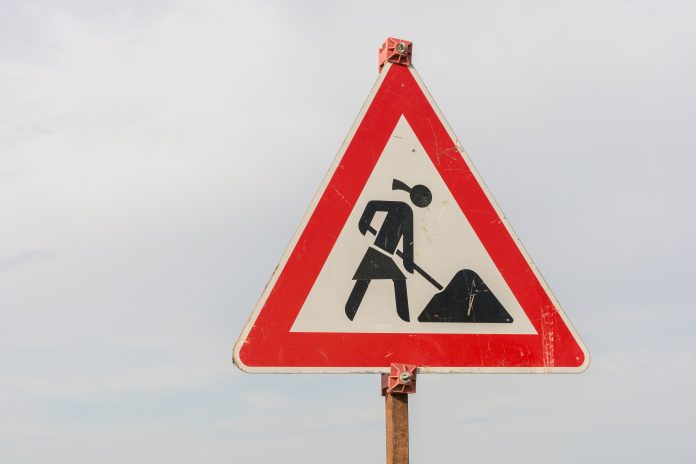Stereotypes of construction workers may be harming perceptions of the industry and contributing to a waning workforce and skills shortages
By exploring some of the main stereotypes of construction and construction workers we can help to dispel any misconceptions by shedding light on the reality of construction work and construction workers.
“Let’s be honest. When picturing a construction worker, everyone sees the image of a not-so-attractive, sticking-out-like-a-sore-thumb man, probably in his 40s, wearing a bright yellow or orange vest. But this picture often changes when we break up the different crafts that are under the same roof of construction. Carpenters, electricians, welders, masons, plumbers, engineers, architects and more, all work in construction. When looking from this angle, we are able to recognise the responsibilities and skills needed to complete the tasks of each professional”, says Lucy Fernando, master franchise owner at Fantastic Services.
According to Build Your Future and Cornerstone Projects, some of the biggest stereotypes of construction work are as follows:
- It is unskilled labour
- It is for uneducated people
- It doesn’t offer a career
- It is only for men
- Construction is unsafe
- Construction is bad for the environment
Antony Rowe, the Director of Atkins Search summarises most of these stereotypes of construction in the following commentary:
“The preconceptions in the construction industry have been created over a number of years, whether that its male-dominated, a generally an unskilled environment and that it’s unsafe. The preconceptions have been hard to shake, but it doesn’t tell the whole story.
“The construction industry is a rare environment where your qualifications, experience and gender should not preclude you from developing a long term, successful career in the industry as there is an opportunity for everyone.
“These preconceptions are being challenged throughout the industry, with most organisations actively implementing diversity policies to support the recruitment of individuals from all backgrounds.”
Rowe reinforces many of the construction stereotypes mentioned above – focusing on misconceptions about education, skills, gender and health and safety.
Education and skills stereotypes in construction
The construction sector encompasses so many different careers – from bricklaying, joinery, engineering, management, commercial and technical roles… the list really is endless. The point is that the majority of these roles require a high level of skill, expertise and experience. Most of these roles also desire at least some level of qualification.
In short, it is simply not true that construction work is unskilled labour. For example, if you think about all the steps involved in building a house – from planning permission to design to health and safety inspections to the actual construction – it is clear that it requires a diverse range of people with the necessary qualifications, skills and experience.
Lucy Fernando commented:
“We’ve heard many people tell their kids that if they don’t study, they will end up on the construction site. Well, in fact, you need to do quite a bit of learning to get yourself in construction. Construction workers go through years of training that contains hours of learning and practice.
“Many professionals start their career in construction with the help of apprenticeship programmes, colleges, and universities.”
There is a serious shortage of construction workers
In light of the severe skills shortage in the construction sector, that neither Brexit nor a pandemic has helped, it is more important than ever to recruit passionate and talented construction workers.
To expand, since the UK left the EU and the EU Freedom of Movement came to an abrupt end, many migrant construction workers left the country. The pandemic has seen even more leave, and so far – they have not returned.
Couple this mass exodus of construction workers with a sharp and sudden increase in demand for construction work since the easing of Covid-19 restrictions, and it is not hard to see the recruitment challenges that the industry is facing.
Output growth has reached its highest level in 25 years meanwhile one in every seven migrant workers has left the construction industry in the last three years.
In 2020, the number of migrant workers in the UK construction industry fell by 8.3% – this is a decrease of 25,000 workers from 2019. In fact, the whole industry is shrinking by a similar percentage.
Fancy a career in construction?
No matter what your age, gender, ethnicity or previous experience – there is likely a suitable job in construction for you.
Generally, the best route is to take a course at college or opt for an apprenticeship. Higher-level apprenticeships, graduate programmes, talent schemes and entry-level jobs are also available.
Advice can be found here.
However, as 21-year-old apprentice Kevin Hough explains – attitudes towards construction-related studies need to change:
“I think there’s a bit of a stigma around apprenticeships still. A lot of people look down on you. Apprenticeships were never covered in our careers class back in school. The careers guidance teacher never mentioned them. She tended to promote going to college only and I know so many of my peers that went onto college and then dropped out after failing exams.”
However for Kevin, he feels passionate about the course – and that is all that matters:
“I’d done Construction Studies at school and I’d enjoyed the very hands-on aspect of that – way more than studying the more academic subjects.
“My course with the ESB includes practical on-the-job training as well as theory modules. But theory and maths aren’t daunting when you figure them out and see them applied to practical situations – it isn’t like doing maths in school.” Kevin continues.
“There are three girls in my course out of 70 and I’d say that the course is totally suitable for girls… There are people on the course too who got the points for law but chose this instead. I’d tell everyone in Leaving Cert year to consider an apprenticeship.”
Kevin is an example of an individual who defied his teachers’ expectations and found his own path. Clearly, Kevin finds enjoyment in his apprenticeship and as he explains, his peers are bright, like-minded individuals. Apprenticeships are a combination of theory and practical-based learning – you cannot pull this knowledge out of thin air!
With all the different job roles available, there is clearly an incredible range of viable, lucrative career options in construction.
Emma Dickson, chair of the Construction Scotland Industry Leadership Group’s Skills Working Group comments:
“When it comes to careers, there is not much that the construction industry doesn’t offer… architect, quantity surveyor or accountant, a role in information technology, or learning a traditional trade…
“There is a lack of understanding of the range of trade and professional roles on offer, and also of trade skill pay levels.”
Let’s take a closer look at some of the careers available on the National Careers Service.
Architects design buildings and provide essential restoration and conservation services. As a starter, they can expect to earn £27,500 per annum. Once they have gained more experience, they can earn anything up to around £90,000. The role requires a highly creative mind and a keen mathematical brain. You may be able to set up your own business or become a partner or associate of an existing architectural firm.
Bricklayers, sometimes referred to as masons or ‘brickies’, build houses, repair walls and chimneys and refurbish decorative stonework. Bricklaying may sound simple but it is far from it – you may specialise in stonemasonry or heritage work. Ultimately, this could lead to you becoming self-employed and setting up your own business. The average wage of a bricklayer starts at £17,000 and goes up to £40,000 depending on experience.
A town planner is someone who shapes the future of towns and cities by balancing the needs of the environment against those of the people. The average salary starts at £18,000 and can go up to £45,000 per year. In terms of progression, a town planner could apply for chartered town planner status, and then become a planner or senior planner. With at least 10 years of experience, you could become a senior manager or planning consultant. You could work as a self-employed consultant. You could move into areas like environmental management, urban regeneration, recreation management and property development.
Construction is becoming a ‘green skills’ industry
Like the majority of industries, construction is constantly looking to become a ‘green skills industry’ by making meaningful environmental changes and offering green skills training.
The United Nations Industrial Development Organisation summarises green skills as:
“Simply put, green skills are the knowledge, abilities, values and attitudes needed to live in, develop and support a sustainable and resource-efficient society.”
This means that today a career in construction is far from traditional – you will be working at the cutting edge of competitive environmental projects.
United Colleges Group is planning to open a green skills hub at the College of North West London:
“Students will be able to learn about air source heat pumps, electric vehicle charging, internal and external wall insulation, and a variety of other important technologies.
“The green skills hub will enable educators, employers, and other organisations to work in partnership to develop a programme that promotes employability, learning, and skills.”
Construction is going digital
Increasingly, the construction and trades industry is moving towards digitalisation and modern methods of construction. This shift to digital would help speed up processes and improve the quality of projects.
Digitalisation includes everything from smart meters to cloud-based construction management to digital twins and construction pipeline forecast tools.
Digitalisation also goes hand in hand with green skills training.
To provide a specific example: before we embark on new construction projects in cities, we need to consider the needs of the local population against the needs of the environment and natural landscape.
To achieve this equilibrium, we must visualise the microclimate of our cities before the building process has begun. For this to be possible, we must use advanced data analytics of weather data and computer simulations.
Therefore, green skills and digitalisation are integral to the future of sustainable construction.
‘Today’s tradespeople are tomorrow’s industry leaders’
Ultimately, construction is right at the heart of everything we do – it is an exciting and transformative industry that offers real choice and is contributing towards a sustainable, green environment. Construction is more than bricks and mortar – it is the future of our built environment and our planet.
Lucy Fernando summarises:
“Almost no one nowadays spends their whole life doing the same job. Today’s tradespeople are tomorrow’s industry leaders. There are countless opportunities or many working in the construction industry. With additional experience, knowledge, and training, tradespeople can move up to management positions, engineering, administration, and entrepreneurship.”
Gender stereotypes in construction
Construction is not ‘just for men’. Whilst the industry may still be male-dominated – women are increasingly involved in all aspects of the industry.
Admittedly, new research from the Women in Construction Summit reveals that only 11% of jobs in the construction industry are held by women. However, this should not put off prospective female construction workers because constructions jobs are suitable for both men and women, despite what traditional gender roles might dictate.
Despite some changing attitudes, not everyone agrees that construction work is suitable for women. Unfortunately, female construction workers may also face more obstacles than their male counterparts.
Lucy Fernando made the following comments:
“Women make up half of the world population. It is about time to normalise and see more women in construction. It would be great to see them being able to use their full potential across all career paths in the world economy.
“No wonder we all see it as unsuitable for women. 99% of construction workers in the UK are men.
“This stereotype is extremely old-fashioned, and we need to break the ‘construction is for men only’ stigma in order to encourage more women in the construction industry.”
Jemma Harris, Actis regional sales director and Women in Construction ambassador, addressed a school group about her experiences as a woman in the industry. She explained that she faced additional pressures because she was a woman, but she did not let this get in the way of her ambitions.
“I had to work that bit harder than the boys… I was promoted later than others because I was a girl. I was overlooked for certain positions. These obstacles didn’t deter me from my goals. They made me more determined to succeed and prove myself to be just as good.”
Harris urges young women to reject preconceived notions about ‘male jobs’ and ‘female jobs’ and embrace their career choice, whatever it may be.
Safety stereotypes in construction
“Construction site safety is the most important factor in every project, but it is still considered one of the most dangerous industries. There are, however, ways to reduce accidents and make construction sites safer.
“Providing the right equipment to workers and supervision is always a must. Other ways to help reduce the accidents to a minimum are creating awareness, going through and explaining needed documentation, training, and last, but not least- communication with people on site,” says Lucy Fernando.
Health and safety on the construction site is, of course, extremely important. Efforts are constantly being made to update and improve health and safety measures.
For example, drones are now being used to inspect building sites which saves a construction worker from what is not only a time-consuming process but possibly a dangerous route too. Sites are often high up and include heavy equipment, unstable electrical wires and inaccessible areas.
Other health and safety developments include digital re-enactment tools of incidents to increase understanding of safety issues; the use of LEDs for emergency escape signalling and modern methods of construction and design for manufacture and assembly (DFMA) to reduce the amount of manual work required.
Mental health in construction
As we know, mental health is just as important as physical health. In the construction industry, mental health is an issue with the suicide rate amongst those working in the trade three times higher than the national average.
The majority of employers across all sectors are beginning to accept this and it is heartening to see that a significant number are putting measures in place to keep their workforce happy and safe.
Recently, Hayfield launched a Wellbeing programme to ensure the mental, physical, social, and financial health of its employees.
The programme includes:
- a hardship fund
- 24/7 employee assistance helpline
- social events
- private healthcare
- ongoing professional and personal development
Burnout the “physical or mental collapse caused by overwork or stress” is another issue for the construction industry.
To tackle burnout Parm Bhangal, managing director of Bhangals Construction Consultants suggests that people reach out and ask for help. It is vital that employers are willing to listen to their employees and take burnout related concerns seriously.
If you are struggling with your mental health and need professional support and advice, please contact the numbers below:
Construction Industry Helpline: 0345 609 1956
Samaritans: 116 123
Environmental stereotypes in construction
Finally, there is a perception that because construction involves building, uses valuable resources and creates a lot of waste it is therefore bad for the environment.
There is no denying that the construction sector contributes to 23% of air pollution, 40% of drinking water pollution, and 50% of landfill wastes and therefore this stereotype of construction is hard to dispel completely.
However, like a lot of industries, it is looking to change for the better.
The government is supporting the inclusion of green skills training and ‘green building’. Work is also being done around the world to reduce carbon emissions and achieve net zero by 2050.
Many companies are aiming to achieve carbon neutral status to minimise their impact on the environment. For example, a drone company called Sky Revolutions has achieved carbon neutral status by offsetting its 2021 carbon emissions in line with the UN’s Framework Convention on Climate Change.
Hopefully, this article has been informative and helped to break down some of the widely held misconceptions and stereotypes of construction and construction workers.
As has been outlined, the construction industry encompasses so many sectors, trades and people. It is constantly working towards becoming more dynamic, more diverse, safer and more sustainable and ultimately moving away from the negative stereotypes that it is associated with.














